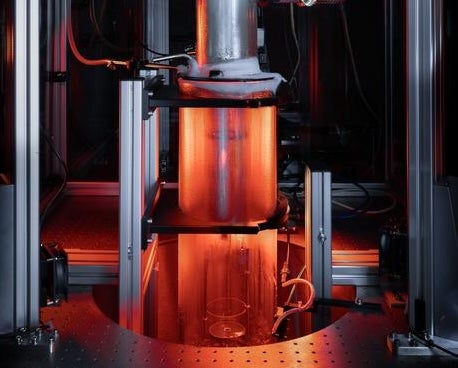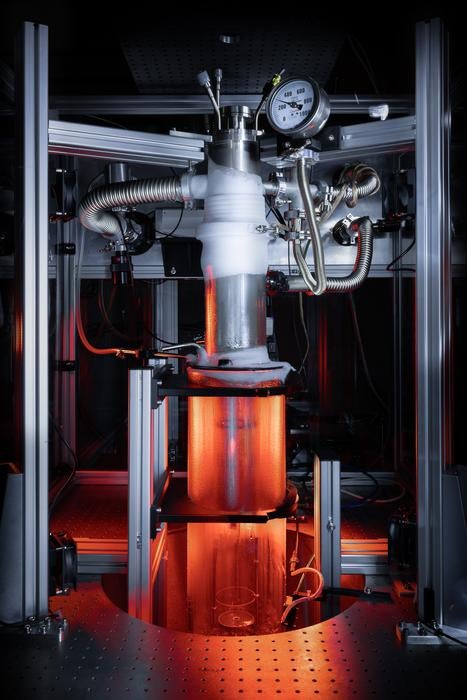Scientists create ‘giant quantum vortex’
Experimental tornado could reveal mysteries of black holes

Scientists have created a “giant quantum vortex” that is able to mimic a black hole and could help reveal their mysteries.
Research hope to use the experiment – which uses superfluid helium to model the behaviours of black holes – to better understand how they behave and interact with the universe.
The experiment is made up of a giant swirling vortex, placed within superfluid helium that is cooled down as much as possible. Researchers can then watch how the tiny waves on its surface behave – which is thought to be similar to the conditions near a rotating black hole.
“Using superfluid helium has allowed us to study tiny surface waves in greater detail and accuracy than with our previous experiments in water,” said Patrik Svancara, from the University of Nottingham, who was lead author on a new paper describing the findings. “As the viscosity of superfluid helium is extremely small, we were able to meticulously investigate their interaction with the superfluid tornado and compare the findings with our own theoretical projections.”
It was built by making a system that could cool litres of superfluid helium down to less than -271 degrees Celsius. When the material is cooled that much, it behaves in strange quantum ways.

“Superfluid helium contains tiny objects called quantum vortices, which tend to spread apart from each other,” said Dr Svancara. “In our set-up, we’ve managed to confine tens of thousands of these quanta in a compact object resembling a small tornado, achieving a vortex flow with record-breaking strength in the realm of quantum fluids.”
Watching the flow of the vortex, researchers found that it behaved similarly to the way that black holes exert a gravitational influence on the universe that surrounds them. Scientists hope that that can be used to simulate complex physics.
“When we first observed clear signatures of black hole physics in our initial analogue experiment back in 2017, it was a breakthrough moment for understanding some of the bizarre phenomena that are often challenging, if not impossible, to study otherwise. Now, with our more sophisticated experiment, we have taken this research to the next level, which could eventually lead us to predict how quantum fields behave in curved spacetimes around astrophysical black holes.”
The work is described in a new paper, ‘Rotating curved spacetime signatures from a giant quantum vortex’, published today in the journal Nature.
Join our commenting forum
Join thought-provoking conversations, follow other Independent readers and see their replies
Comments
Bookmark popover
Removed from bookmarks